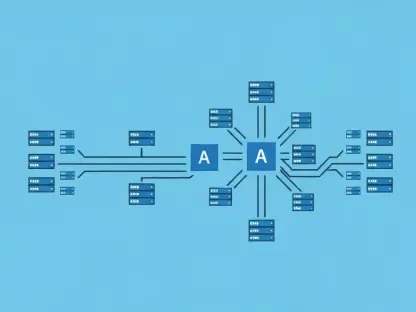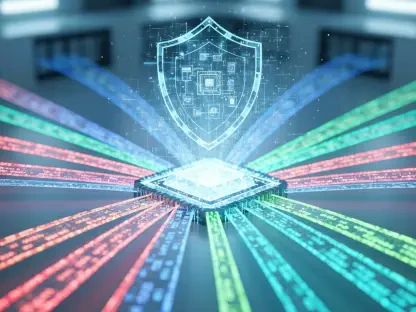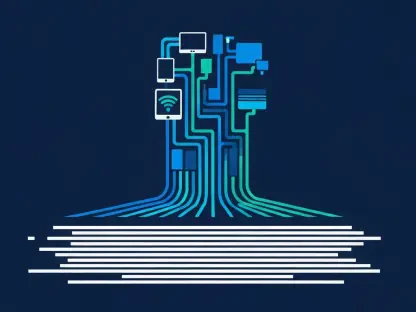In the rapidly evolving realm of software development, integrating artificial intelligence into DevSecOps has emerged as an innovative approach, significantly enhancing both security and efficiency. This fusion of AI with DevSecOps allows for earlier security testing within the software development lifecycle (SDLC), mitigating complications and expenses linked to addressing vulnerabilities late in the process. It underscores the necessity of early integration of infrastructure and application security planning, choosing the right tools to execute these plans, and thereby facilitating a seamless workflow.
The Role of AI in DevSecOps
Automating Security Checks and Improving Workflow Efficiency
Artificial intelligence has become a critical component in modern DevSecOps strategies by providing automated security checks that significantly improve the workflow of software development. By leveraging AI, organizations can automate routine and repetitive tasks that typically consume considerable amounts of time and resources. This automation allows development teams to focus on higher-value activities, such as innovation and strategic planning, rather than getting bogged down by manual security checks. The synergy achieved through AI enhances collaboration among development, security, and operations teams, effectively breaking down traditional silos and fostering a more unified approach.
Moreover, the efficiency gained through AI-driven processes enables faster identification and remediation of security vulnerabilities. This proactive approach reduces the likelihood of significant issues arising at later stages of development, thereby optimizing the overall development timeline. Recent reports show that 68% of industry leaders are using generative AI to boost IT efficiency, accelerating their market delivery. This widespread adoption underscores AI’s role in transforming DevSecOps into a more agile and responsive framework, capable of meeting the demands of today’s fast-paced technological landscape.
Enhanced Collaboration and Accelerated Development Rates
Generative AI further enhances the collaborative efforts within DevSecOps by enabling accelerated development and testing rates. It provides quick and efficient solutions, supporting development teams in producing higher-quality code at a faster pace. This acceleration is vital in industries where time-to-market can define competitive advantage. By integrating AI into their workflows, development teams can reduce the iteration cycles needed to refine and perfect their software, ensuring faster deployment without compromising on security or quality.
Additionally, AI-powered tools offer suggestions and shortcuts that streamline the development process. This capability not only enhances productivity but also ensures that the development teams fully utilize their expertise on complex projects rather than getting entangled in mundane tasks. Integrating governance earlier in the SDLC through AI helps in instilling best practices from the beginning, reducing the time required to bring products to market. This approach leads to more robust and secure software, ready to withstand evolving cybersecurity threats.
Combating AI-Powered Cyber Threats
The Dual-Edged Sword of AI in Cybersecurity
The integration of AI into DevSecOps is not solely for bolstering defenses. Cybercriminals are also harnessing AI to enhance their attack strategies, creating a dual-edged sword scenario. These bad actors exploit AI’s capabilities to increase the speed, scale, and sophistication of their cyberattacks. Techniques such as crafting more convincing phishing emails or using voice and video cloning for fraud are significantly bolstered by AI, making them harder to detect and prevent. The FBI has highlighted the growing risks posed by these AI-enhanced cyber threats, noting the substantial financial and reputational damages they can cause.
To address these evolving threats, organizations must adopt a proactive security mindset. This involves integrating AI tools within DevSecOps throughout the SDLC to enable real-time threat detection and response. Through continuous monitoring and rapid mitigation of risks, organizations can fortify their defenses, staying one step ahead of cybercriminals. In doing so, they not only protect sensitive data and systems but also maintain their market credibility and customer trust.
Proactive Security Measures and Real-Time Threat Detection
Embracing AI in DevSecOps allows organizations to shift from a reactive to a proactive approach to security. By incorporating AI-driven tools into their security framework, companies can achieve real-time threat detection, enabling rapid responses to potential vulnerabilities before they can be exploited. This proactive stance significantly enhances the overall security posture, reducing the number of unnecessary tests and focusing efforts on areas with the highest risk potential.
Moreover, AI’s capability to analyze vast amounts of data quickly and accurately is instrumental in identifying subtle patterns and anomalies that may indicate security threats. This analytical prowess helps organizations preemptively address security concerns, ensuring a more resilient security framework. As a result, businesses can innovate more swiftly and confidently, knowing that their proactive measures are safeguarding against both present and future cyber threats. This forward-thinking strategy positions organizations to remain competitive while maintaining robust defenses against increasingly sophisticated cyber adversaries.
Advancing Security and Innovation with AI
Embracing AI to Foster Innovation
The incorporation of AI into DevSecOps has redefined the balance between security and innovation, allowing organizations to foster a more agile and secure development environment. By deploying AI, companies can streamline their development processes, swiftly navigating through potential security roadblocks and ensuring a faster path to innovation. AI’s ability to automate and enhance various aspects of the SDLC empowers teams to focus on creative solutions and complex problem-solving, ultimately driving the next wave of technological advancements.
Furthermore, the use of AI in DevSecOps promotes a culture of continuous improvement and agility. Development teams equipped with AI tools can adapt more quickly to changing market demands and emerging security threats. This adaptability is crucial for maintaining a competitive edge in an ever-evolving technological landscape. Organizations that embrace AI in their DevSecOps strategies not only enhance their security measures but also unlock new opportunities for growth and innovation, positioning themselves at the forefront of their industries.
The Future of DevSecOps and AI Integration
In the rapidly changing field of software development, incorporating artificial intelligence into DevSecOps has become a groundbreaking approach that greatly boosts both security and efficiency. By blending AI with DevSecOps, it is possible to conduct security testing much earlier in the software development lifecycle (SDLC). This proactive method reduces the complications and costs associated with fixing vulnerabilities discovered later in the process. The approach emphasizes the critical need for early integration of both infrastructure and application security planning. Selecting the appropriate tools to carry out these plans is crucial, as it ensures a smoother workflow. Additionally, AI can continuously monitor and analyze data, offering insights that help in predicting and mitigating potential security threats before they become serious issues. This seamless integration not only enhances security measures but also accelerates the overall development process. By prioritizing early security measures and leveraging AI capabilities, teams can achieve a more robust and efficient software development environment.









